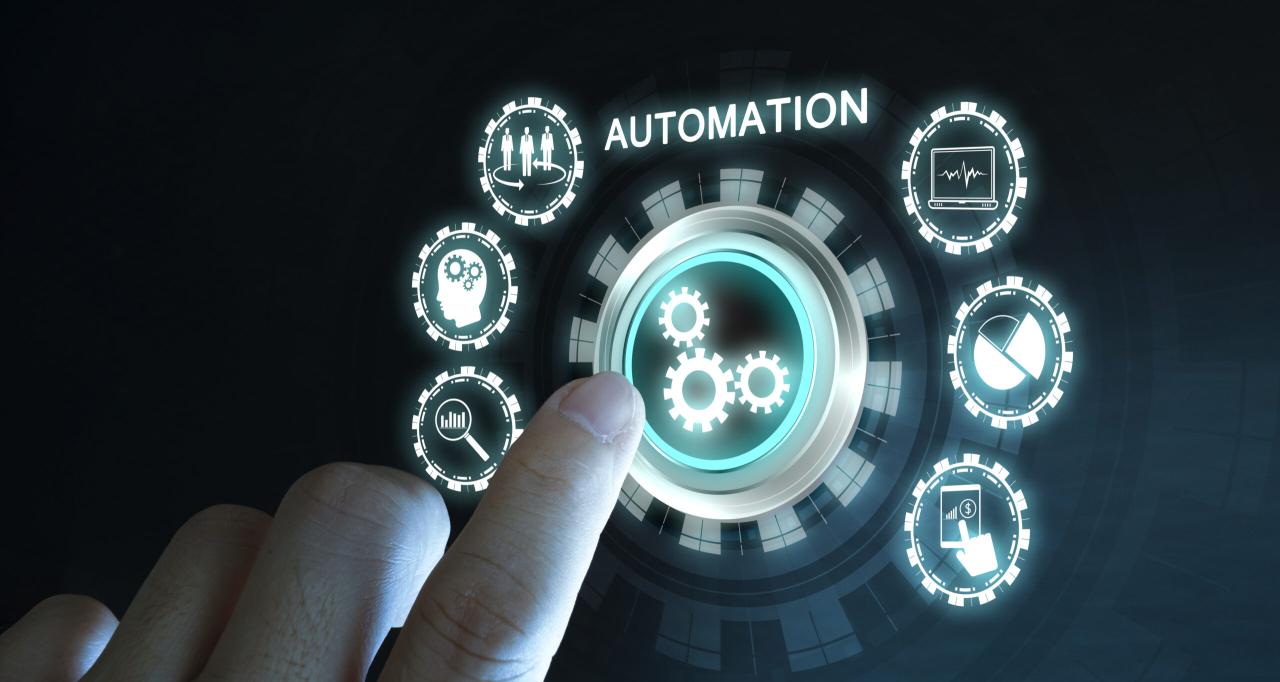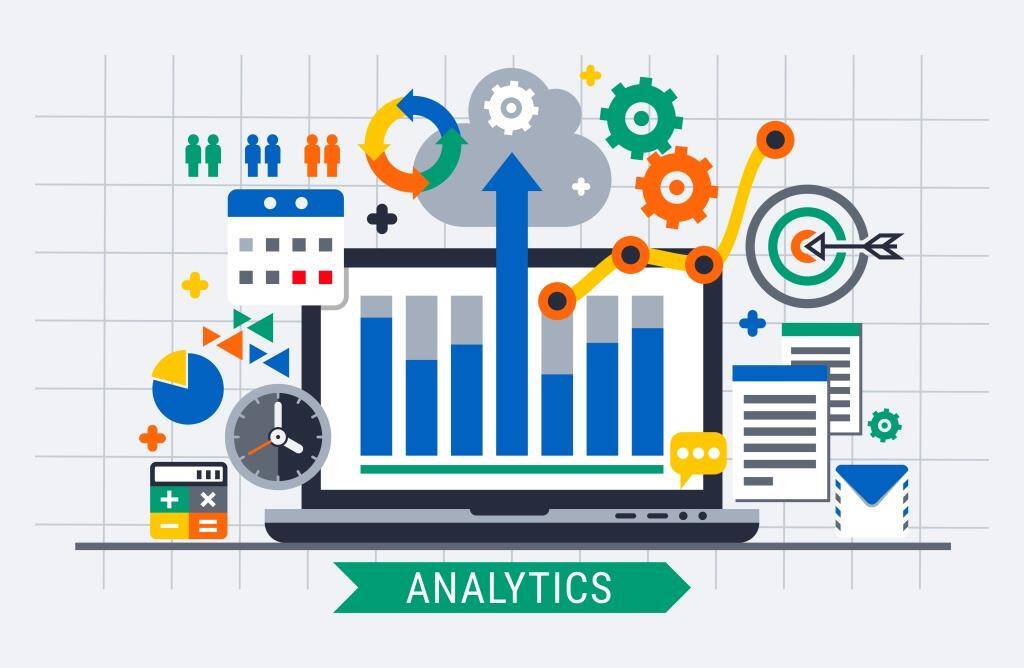Future of Digital Workflows: Seamless Efficiency Ahead

The landscape of work is undergoing a profound and continuous transformation, driven by an accelerating pace of technological innovation. What began with the digitization of documents and basic office software has evolved into a complex ecosystem where entire processes are orchestrated digitally. The future of digital workflows is not merely about moving tasks online; it’s about creating intelligent, adaptive, and highly efficient systems that seamlessly connect people, data, and applications, fundamentally reshaping how organizations operate and individuals achieve their goals. This evolution promises unprecedented levels of productivity, collaboration, and strategic insight.
This comprehensive article will delve into the critical forces shaping digital workflows, from the pervasive influence of Artificial Intelligence (AI) and automation to the shift towards hybrid work models and hyper-personalized experiences. We will explore the key components of future workflows, the challenges and opportunities they present, and how businesses and professionals can strategically adapt to thrive in this rapidly evolving digital frontier. The aim is to illuminate a future where work is not just done, but flows with intelligent precision and effortless collaboration.
The Genesis of Digital Workflows

To truly appreciate the future, it’s essential to understand the journey. Initially, digital workflows involved basic computerization of manual processes. Think of word processors replacing typewriters or spreadsheets replacing ledger books. The internet brought about interconnectedness, enabling email for communication and shared drives for document collaboration.
The real shift began with the rise of enterprise resource planning (ERP) systems, customer relationship management (CRM) software, and dedicated project management tools in the late 20th and early 21st centuries. These systems started to automate sequential tasks and centralize data. However, many processes remained siloed, requiring manual handoffs or complex integrations.
Today, we stand at the cusp of a new era. Driven by powerful technologies like AI, machine learning (ML), robotic process automation (RPA), and advanced cloud computing, digital workflows are transitioning from rigid, pre-defined sequences to dynamic, intelligent, and self-optimizing systems. This leap promises to liberate human potential from repetitive tasks, allowing a focus on creativity, critical thinking, and strategic innovation.
Key Pillars Shaping the Future of Digital Workflows
Several interconnected technological and societal shifts are defining the trajectory of digital workflows. Understanding these pillars is crucial for any organization looking to future-proof its operations.
A. Artificial Intelligence (AI) and Machine Learning (ML)
AI is the brain powering the next generation of digital workflows, transforming them from automated to intelligent.
- Intelligent Automation: Beyond simple RPA (which automates repetitive, rule-based tasks), AI enables Intelligent Process Automation (IPA) that can handle unstructured data, make decisions, and adapt to changing conditions. This includes tasks like invoice processing, customer service inquiries, and data entry.
- Predictive Analytics: AI analyzes historical data within workflows to predict future outcomes, identify potential bottlenecks, or forecast demand, allowing for proactive adjustments. For instance, AI can predict project delays or identify customers at risk of churning.
- Natural Language Processing (NLP) and Generation (NLG): NLP allows systems to understand human language (e.g., analyzing customer feedback, processing contracts), while NLG enables automated generation of reports, summaries, and personalized communications.
- Contextual Intelligence: AI-powered workflows can understand the context of a task, user, or situation, providing relevant information, suggesting next steps, or adapting the workflow dynamically.
B. Hyperautomation and Robotic Process Automation (RPA)
Hyperautomation is the end-to-end automation of every process that can be automated, leveraging a combination of technologies. RPA is a foundational component of this.
- Task Automation: RPA bots automate repetitive, high-volume, rule-based tasks that typically involve human interaction with software applications (e.g., copying data, generating reports, processing forms).
- Workflow Orchestration: Hyperautomation extends RPA by orchestrating various technologies (AI, ML, BPM, iPaaS) to automate complex, end-to-end business processes, often spanning multiple departments and systems.
- Digital Workers: The concept of “digital workers” emerges, where RPA bots and AI agents act as virtual employees, handling administrative and data-intensive tasks 24/7.
- Improved Accuracy and Compliance: Automation reduces human error and ensures consistent adherence to regulatory requirements and internal policies.
C. Cloud-Native Architectures and SaaS
The shift to cloud computing and Software-as-a-Service (SaaS) models is foundational for agile, scalable, and globally accessible workflows.
- Scalability and Flexibility: Cloud platforms offer on-demand scalability, allowing organizations to rapidly expand or contract their digital infrastructure as needs change, without significant capital expenditure.
- Accessibility and Collaboration: Cloud-native applications enable employees to access workflows and data from anywhere, on any device, fostering seamless collaboration across geographical boundaries.
- Reduced IT Overhead: SaaS models eliminate the need for in-house server maintenance, software updates, and complex IT infrastructure management, allowing businesses to focus on core competencies.
- Integration Capabilities: Modern cloud platforms and SaaS applications are built with APIs (Application Programming Interfaces) that facilitate easy integration, allowing different systems to “talk” to each other effortlessly.
D. Low-Code/No-Code Platforms
These platforms empower business users, not just professional developers, to create and customize digital workflows.
- Citizen Developers: Low-code/no-code tools enable “citizen developers” (business users with little to no coding experience) to build applications and automate processes, significantly accelerating development cycles.
- Rapid Prototyping: Businesses can quickly prototype and deploy new workflow solutions, testing ideas and iterating based on real-time feedback.
- Democratization of Development: This trend reduces reliance on stretched IT departments, fostering innovation and agility within business units themselves.
- Increased Responsiveness: Organizations can respond faster to changing market conditions or internal needs by quickly adapting or creating new workflows.
E. Hybrid Work Models and Distributed Teams
The permanent shift towards hybrid and remote work necessitates robust, flexible digital workflows.
- Seamless Collaboration Tools: Integrated platforms for communication (chat, video conferencing), document sharing, and project management are essential to maintain cohesion among distributed teams.
- Asynchronous Work Optimization: Workflows are designed to support asynchronous collaboration, allowing team members in different time zones or with varying schedules to contribute effectively without constant real-time interaction.
- Security and Data Access: Ensuring secure remote access to critical systems and data, along with robust identity management, is paramount for hybrid digital workflows.
- Employee Experience: Digital workflows must be intuitive and user-friendly to ensure high adoption rates and maintain employee satisfaction in a distributed environment.
F. Augmented Reality (AR) and Virtual Reality (VR)
While perhaps less direct than AI or RPA, AR/VR are poised to transform specific aspects of digital workflows.
- Immersive Training: VR can provide realistic simulations for employee training, particularly in hazardous environments or for complex machinery operations.
- Remote Assistance and Collaboration: AR overlays digital information onto the real world, enabling remote experts to guide on-site technicians through complex repairs or installations.
- Virtual Workspaces: VR could create immersive virtual meeting rooms or collaborative design spaces, enhancing presence and interaction for distributed teams.
- Data Visualization: AR/VR can visualize complex datasets in 3D, providing new perspectives for data analysis and decision-making in design, engineering, or scientific research workflows.
The Landscape of Future Digital Workflows

The impact of these evolving workflows will be felt across every sector and functional area within an organization.
A. Sales and Marketing Workflows
- Personalized Customer Journeys: AI-driven CRM systems will automate highly personalized marketing campaigns and sales outreach, adapting in real-time based on customer behavior and sentiment.
- Automated Lead Qualification: AI will automatically qualify leads based on defined criteria, ensuring sales teams focus on the most promising prospects.
- Content Generation and Distribution: AI-powered tools will assist in generating marketing copy, social media posts, and even video scripts, optimizing content distribution based on audience analytics.
- Predictive Sales Forecasting: ML models will provide more accurate sales forecasts, allowing for better resource allocation and inventory management.
B. Human Resources (HR) Workflows
- Automated Onboarding and Offboarding: Streamlining paperwork, IT provisioning, and training assignments for new hires, and automating exit processes.
- Intelligent Recruitment: AI can screen resumes, conduct initial candidate assessments, and even predict job fit, reducing time-to-hire and improving candidate quality.
- Employee Experience Platforms: AI-powered chatbots and self-service portals will provide instant answers to HR queries, manage leave requests, and offer personalized learning recommendations.
- Performance Management: AI analytics will help identify high-performers, potential burnout risks, and training needs, allowing for proactive HR interventions.
C. Finance and Accounting Workflows
- Automated Invoice Processing and Reconciliation: RPA and AI will fully automate accounts payable/receivable, reducing manual errors and accelerating financial closing cycles.
- Fraud Detection: ML algorithms will analyze financial transactions in real-time to detect anomalous patterns indicative of fraud.
- Predictive Financial Modeling: AI will enhance financial forecasting, budgeting, and scenario planning, providing more accurate insights for strategic decision-making.
- Regulatory Compliance: Automated systems will ensure adherence to complex financial regulations, generating audit trails and flagging potential non-compliance issues.
D. IT and Operations Workflows
- Automated IT Operations (AIOps): AI will monitor IT infrastructure, predict and resolve outages, automate routine maintenance, and optimize resource allocation.
- DevOps and CI/CD: Continuous Integration/Continuous Delivery pipelines will become even more automated, with AI assisting in code testing, deployment, and performance monitoring.
- Cybersecurity Automation: AI will power threat detection, incident response, and vulnerability management, acting as a force multiplier for security teams.
- Supply Chain Optimization: AI-driven workflows will optimize logistics, inventory management, demand forecasting, and supplier relationships, enhancing resilience and efficiency.
E. Customer Service Workflows
- Intelligent Chatbots and Virtual Agents: Providing instant, 24/7 support for common queries, escalating complex issues to human agents only when necessary.
- Sentiment Analysis: AI will analyze customer interactions (voice, text) to gauge sentiment, prioritize urgent cases, and route them to the most appropriate agent.
- Personalized Support: Workflows will draw upon comprehensive customer data to provide agents with relevant context and suggested solutions, improving resolution times and customer satisfaction.
- Proactive Service: AI can identify potential issues before customers even realize them, enabling companies to offer proactive support or solutions.
Challenges and Considerations for Implementing Future Workflows
While the benefits are clear, navigating the transition to intelligent digital workflows presents significant challenges that organizations must address strategically.
A. Data Quality and Governance
AI and automation rely heavily on high-quality, well-governed data. Poor data can lead to biased outcomes, inefficient processes, and flawed decisions. Establishing robust data governance frameworks is critical.
B. Cybersecurity Risks
Increased automation and interconnectedness expand the attack surface for cyber threats. Protecting sensitive data and ensuring the security of automated processes becomes even more crucial.
C. Change Management and Employee Adaptation
Introducing new, highly automated workflows requires careful change management. Employees may feel threatened by automation or struggle to adapt to new tools and processes. Training, clear communication, and demonstrating how automation augments human roles are vital.
D. Integration Complexity
While cloud and APIs simplify integration, orchestrating complex workflows across disparate legacy systems and new cloud applications can still be challenging. An Integration Platform as a Service (iPaaS) often becomes necessary.
E. Ethical AI and Bias
If AI is making decisions within workflows (e.g., in hiring or loan applications), ensuring fairness, transparency, and mitigating algorithmic bias is a profound ethical responsibility.
F. Skills Gap
The shift to managing and overseeing intelligent workflows requires new skill sets, including AI literacy, data analytics, process orchestration, and complex problem-solving. Organizations must invest in upskilling their workforce.
G. Cost of Implementation and ROI Justification
Initial investment in advanced automation and AI technologies can be substantial. Clearly defining expected ROI and demonstrating value over time is important for securing stakeholder buy-in.
Strategic Steps for Embracing the Future of Digital Workflows
Organizations seeking to harness the power of future digital workflows should consider the following strategic imperatives:
A. Start with a Process Audit
Before automating, understand your current processes inside out. Identify bottlenecks, inefficiencies, and areas where automation can deliver the most immediate impact and value.
B. Adopt a “Digital-First” Mindset
Cultivate a culture that prioritizes digital solutions and continuous process improvement. Encourage experimentation and a willingness to embrace new technologies.
C. Invest in Core Technologies
Prioritize investment in robust cloud infrastructure, AI/ML platforms, RPA tools, and low-code/no-code capabilities that align with your long-term strategy.
D. Foster Cross-Functional Collaboration
Break down departmental silos. Future workflows often span multiple functions, requiring seamless collaboration between IT, business units, and external partners.
E. Prioritize Data Strategy
Develop a comprehensive data strategy that ensures data quality, accessibility, security, and ethical use across all workflows. Data is the fuel for intelligent automation.
F. Upskill and Reskill Your Workforce
Proactively prepare your employees for new roles that involve managing, monitoring, and collaborating with intelligent automation. Focus on skills like critical thinking, creativity, and digital literacy.
G. Implement Robust Governance and Ethics
Establish clear governance frameworks for automation initiatives, ensuring compliance, accountability, and ethical use of AI within workflows.
H. Embrace a Phased and Iterative Approach
Start with pilot projects, learn from initial implementations, and scale gradually. The future of workflows is not a one-time project but a continuous journey of optimization and innovation.
Conclusion
The future of digital workflows is characterized by unparalleled intelligence, adaptability, and integration. It promises a world where repetitive, mundane tasks are largely handled by intelligent machines, freeing human talent to focus on creativity, strategy, and meaningful human connection. Organizations that strategically embrace hyperautomation, AI, cloud-native architectures, and low-code platforms will not only achieve significant operational efficiencies but also gain a profound competitive advantage.
However, this transformation is not without its complexities. Addressing challenges related to data governance, cybersecurity, ethical AI, and, most importantly, managing the human element through effective change management and upskilling, will be paramount. The journey towards the intelligent enterprise is an ongoing one, demanding continuous adaptation and a forward-thinking approach. By orchestrating these advanced digital workflows, businesses can unlock new levels of productivity, foster innovation, and truly shape a future where work flows seamlessly, intelligently, and with greater purpose.







